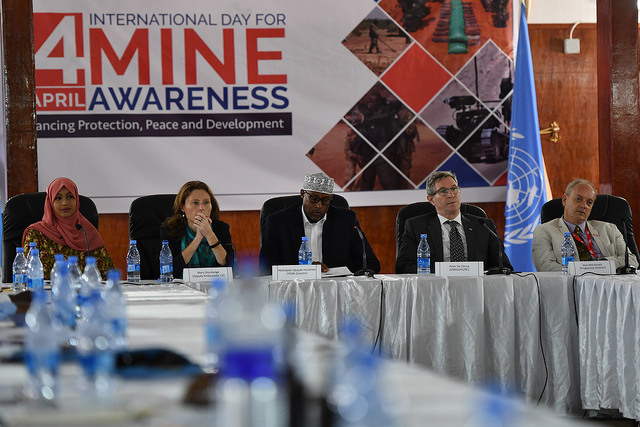Children bear the brunt of IEDs and remnants of war in Somalia-UN official


Improvised Explosive Devices (IEDs) remain one of the single most threats to civilian population in Somalia with children adversely affected, the UN has said adding terror groups in the country were exploiting explosive remnants of war (ERW) to assemble IEDs.
Speaking during the International Day for Mine Awareness and Assistance in Mine Action in Mogadishu Wednesday, deputy UN chief in Somalia Peter de Clercq said children in particular were at a risk of landmines and ERWs left behind after years of conflict.
“Each year, 75 children are killed or injured by mines and explosive remnants of war in this country. And the impact on lives and livelihoods therefore is devastating,” said Mr. de Clercq.
“Many more people are killed through these improvised explosive devices along Somalia’s roads and across its cities,” he added.
Years of armed conflict in Somalia have resulted in widespread contamination with ERW and landmines, as well as a steady rise in the use of IEDs – the latter remain the deadliest threat to lives in the Horn of Africa country and were responsible for killing and injuring more than 1,400 civilians last year, according to the UN Mine Action Service (UNMAS).
TRUCK BOMBING
The October 14 truck bombing in Mogadishu which killed over 500 people and injured more than 300 others exemplified the threat mines posed to the country with de Clercq describing as “one of the worst” IED bombings to ever occur in Africa.
The UN top official called for scaling up of mine action programmes noting this could ‘play an important role in providing jobs in rural areas and improving livelihoods by making roads passable and allowing for the movement of goods and people’.
The theme for this year’s observance of the international day is “the role of mine action in advancing protection, peace and development,” underscoring the obstacle that IEDs, landmines and unexploded ordnance represent to the country’s economic growth and development.
Also addressing the observance, the Head of UNMAS in Somalia, Alan MacDonald, stressed the importance of removing all unexploded ordnance and landmines, the contents of which are often used to assemble IEDs.
“The explosive remnants of war, of unexploded ordnance and landmines, are being used as the material to build IEDs. The biggest problem that Somalia has is the IED threat, and if we can remove the unexploded ordnance and the landmines, we will remove some of the elements of that threat,” Mr. McDonald said.
DISPOSAL INITIATIVES
In his remarks today, the Director General of the Somalia Explosive Management Authority (SEMA), Abdulkadir Abdulle Hooshow, called for more donor support for mine disposal initiatives in the country. He said his agency has developed a national mine action strategy to guide mine disposal programmes for the next three years.
“There is no proper investment in efforts to dispose of mines in Somalia and there is insufficient stakeholder coordination. There is also insufficient international funding for landmine disposal programmes and poor training,” said Mr. Hooshow.
The UN General Assembly in 2005 declared April 4 the International Day for Mine Awareness and Assistance in Mine Action calling for continued efforts – with the assistance of the United Nations and relevant organizations – to foster the establishment and development of national mine-action capacities in countries where mines and ERW constitute a serious threat to civilian populations, or an impediment to social and economic development at the national and local levels.
Somalia is a signatory to the Convention on the Prohibition of the Use, Stockpiling, Production and Transfer of Anti-Personnel Mines, which requires countries to destroy all such landmines by October 2022.